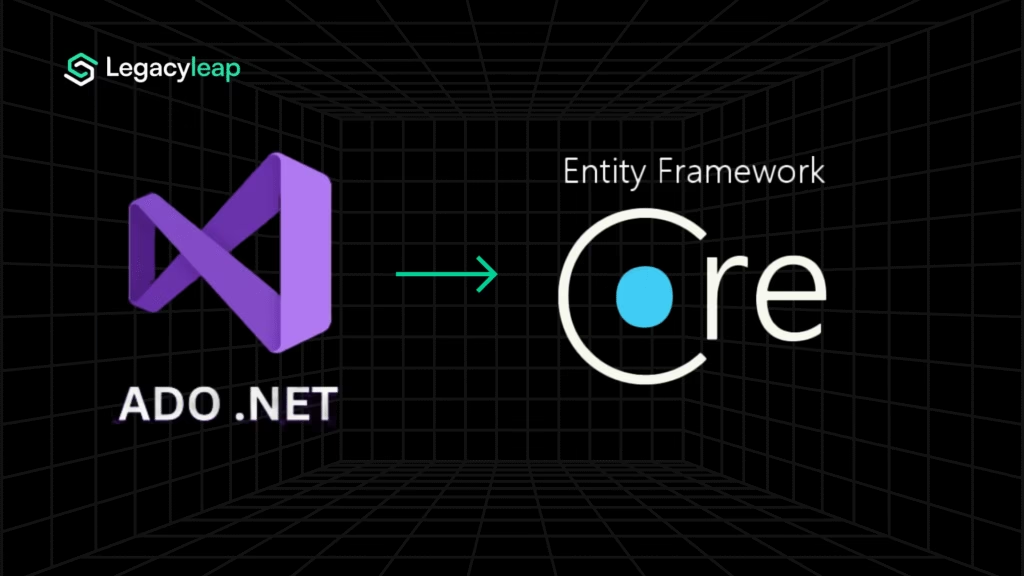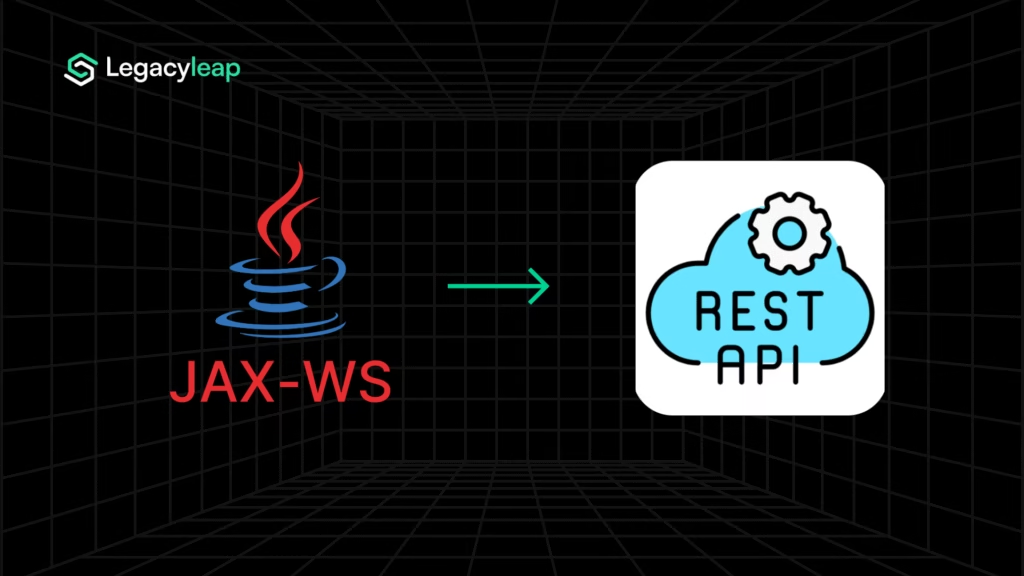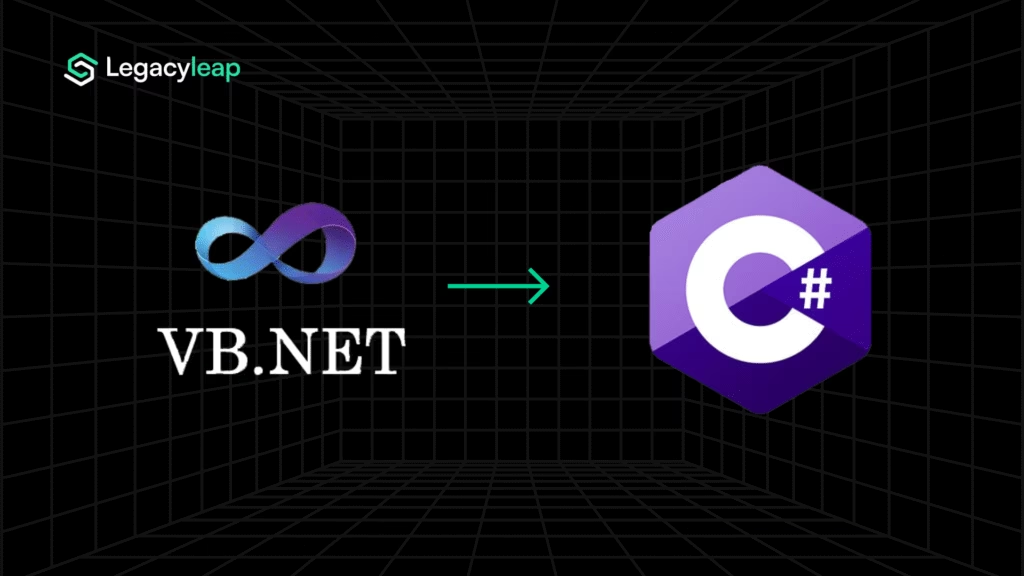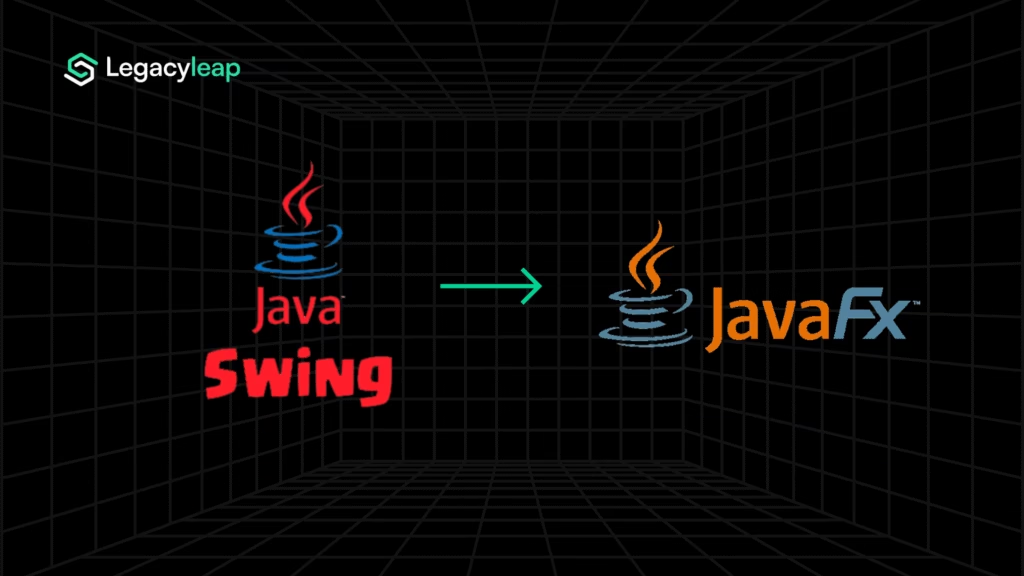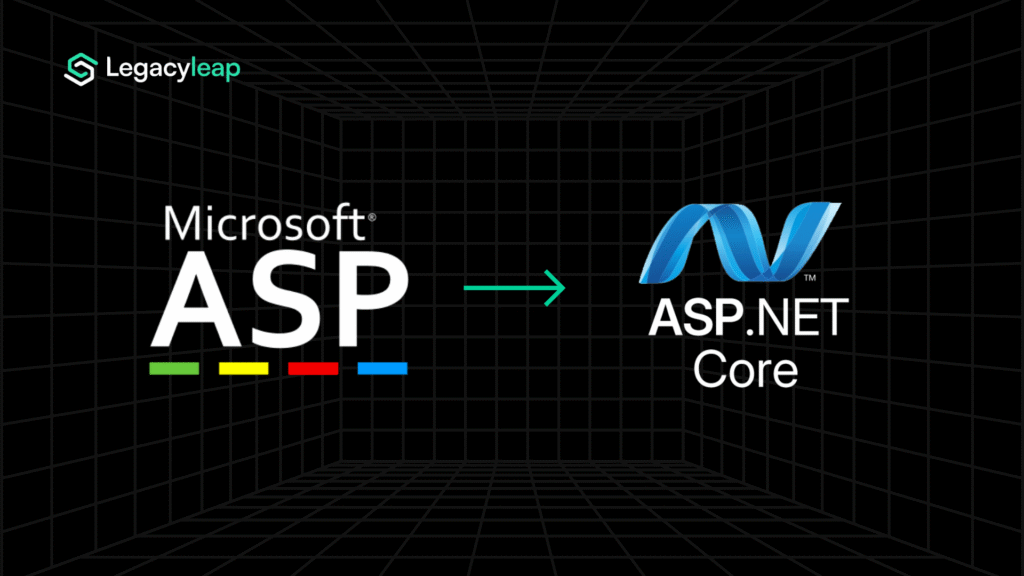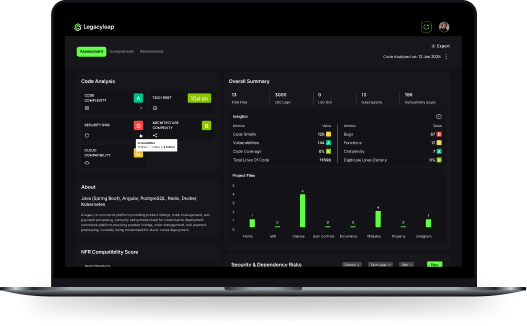Introduction: AI Code Tools ≠ Modernization Tools
Cursor. Copilot. Cody. They’ve redefined developer velocity. In the hands of a strong engineer, these GenAI tools reduce boilerplate, suggest patterns, and flatten the feedback loop between idea and code.
But when you look at it for enterprise modernization, that’s where the value ends.
Because speed isn’t the problem here. The problem is comprehension. Alignment. Risk. Technical debt no one fully understands. Codebases older than your CI/CD pipeline. And systems you can’t afford to rewrite without breaking everything else.
And that’s exactly where these tools fall apart because they don’t solve the systemic complexity of modernization.
They optimize for the individual.
- Modernization demands alignment across the team → They accelerate generation.
- Modernization demands architectural control → They prompt.
You need a dedicated, comprehensive platform.
This blog breaks down why Gen AI assistants like Cursor, impressive as they are, can’t handle the realities of legacy modernization. And what enterprise teams actually need to modernize systems safely, coherently, and at scale.
1. Code Without Context Breaks Teams
Cursor generates code really fast, but like most Gen AI coding tools, it operates on isolated prompts. They don’t know where a function sits in the broader architecture, what it touches downstream, or which design constraints apply. They produce code that looks correct but behaves inconsistently once it hits the real system.
That’s why legacy systems break when they’re “modernized” this way. There’s no awareness of functional boundaries, dependency chains, or technical intent. One dev adds a shortcut. Another rewrites the service. No one sees the bigger picture.
LegacyLeap solves this at the architectural root. It builds semantic models of the system, including mapping logic, structure, and dependencies across layers. Its source code intelligence uses multi-level intermediate representations (IRs) to capture how code behaves, not just how it looks.
The result? Code is generated within architectural context, not outside it.
Why this matters
Without context, Gen AI tools amplify inconsistency. With context, modernization becomes structured, verifiable, and system-aware, the only way it works at enterprise scale.
2. A Pair Programmer Can’t Align a Team
AI coding assistants like Cursor are designed for the individual developer. They function like hyper-efficient pair programmers, great at solving local problems, fast at suggesting code completions.
But legacy modernization isn’t a solo task. It’s a team effort across architects, backend engineers, frontend devs, testers, and platform owners. And when five developers use Cursor, you get five variations of “correct”, none of which scale coherently across the system.
There’s no shared mental model. No source-of-truth architecture. No continuity between what one dev generates and the rest of the team understands.
“Modernization only works when everyone builds from the same map. Anything less creates divergence.”
LegacyLeap builds that blueprint first. Using shared semantic graphs and a centralized context model, it enables every agent and every human developer to operate from the same structural understanding of the system. No matter who’s contributing, the outputs stay consistent, reusable, and aligned to architectural goals.
What teams need that Cursor doesn’t offer:
- A unified semantic graph of the system
- Agent-level enforcement of modernization patterns
- Shared architectural boundaries across services
- Role-specific views (for QA, architecture, DevOps, etc.)
Why this matters
Modernization isn’t about one developer moving fast. It’s about an entire team moving in sync. That demands collaboration frameworks.
3. Fast Code Means Nothing Without Architecture
Cursor can write code quickly. But fast doesn’t mean clean. Or modular. Or testable.
In legacy modernization, quality is the foundation. Generated code needs to be layered, domain-aligned, and regression-proof. That requires architectural intent, not just accurate syntax.
But tools like Cursor aren’t aware of any of that unless prompted manually. You still have to instruct it on layering principles, validate the design by hand, and write your own tests after the fact. In modernization projects, that’s not just time-consuming, it’s risky.
“It’s not just about generating working code. It’s about generating code that still works five years from now.”
LegacyLeap flips the approach. Its agents are trained on modernization design patterns, not just token sequences. They’re test-aware, domain-aligned, and backed by human-in-the-loop (HITL) validation that guarantees architectural integrity before deployment.
Cursor vs Legacyleap: The Design Discipline Gap
| Criteria | Cursor | LegacyLeap |
| Layered architecture | Optional, prompt-driven | Enforced by design-aware agents |
| Domain modeling | Manual or skipped | Structured via IRs |
| Test coverage | Needs manual instruction | Auto-generated with refactoring |
| Design validation | Done post-generation | Built into the transformation loop |
| Code review + refinement | Developer-only | Human-in-the-loop with platform context |
Why this matters
Modernization isn’t just about replacing code. It’s about replacing it well, with maintainable, modular, and testable systems you can trust for the next 10 years.
4. Speed Doesn’t Equal System Progress
“Velocity is meaningless if every team moves in a different direction.”
Cursor can make five developers feel productive. But modernization doesn’t succeed when velocity is measured in commits.
It succeeds when outputs are consistent, decisions are traceable, and systems evolve predictably across teams. That’s where Gen AI coding tools break down because they mirror the habits and mental models of individual users.
One dev refactors a monolith one way. Another breaks it up differently. You’re left stitching together five styles of transformation into one fragile system.
LegacyLeap solves for system velocity, not individual speed. It standardizes the modernization process through intermediate representations (IRs), shared transformation rules, and agent-level control. Refactoring patterns, naming conventions, and architecture layouts are enforced across the board, not reinvented per user.
Why this matters
You can’t scale a modernization program if every developer builds differently. Platform-led velocity means you move as one, from the first system to the hundredth.
5. Gen AI Can’t Teach What It Doesn’t Explain
AI tools like Cursor give junior developers the illusion of momentum. This is no way an attack on said tools, but when the code works and no one knows why, that momentum turns into maintenance debt.
In legacy systems, where business logic is buried deep and edge cases are everywhere, understanding matters more than output. Without it, developers can’t improve the system. They can only copy, paste, and hope for the best.
LegacyLeap is designed to be explainable by default. It surfaces traceable logic flows, visualizes refactored structures, and embeds decision trees directly into the developer interface. Every output is tied back to intent, so even newer team members can understand the reasoning behind the architecture, not just the syntax.
Why this matters
Good modernization is teachable. The moment your devs stop treating AI output as a black box, you gain long-term maintainability across your team.
===
To summarize,

Wrapping Up: Modernization Demands More Than a Prompt
AI coding tools like Cursor have changed how individuals write software. For greenfield projects and one-off fixes, they’re a massive productivity unlock.
But legacy modernization is a system-wide transformation. It requires structure, standardization, collaboration, and visibility across people, tools, and decades-old codebases.
That’s where platforms come in.
LegacyLeap wasn’t built to suggest code. It was built to understand systems, guide change, and produce outcomes teams can trust. With semantic context, human-in-the-loop control, and design-aware agents, it gives enterprises the clarity and control needed to modernize without guesswork.
If you’re planning modernization — or already in it — start where it counts: with architectural context.
If you want to see what this looks like in your own environment, start with our $0 modernization assessment. No commitment or obligation. Hand us any of your legacy apps, and we’ll show you how Legacyleap can modernize it, including cost, timelines, and risks.
What do you get out of the $0 assessment? Find out here.
And when you’re ready, reach out today to claim your $0 assessment, all 100% deployed on your premises or cloud environments.




